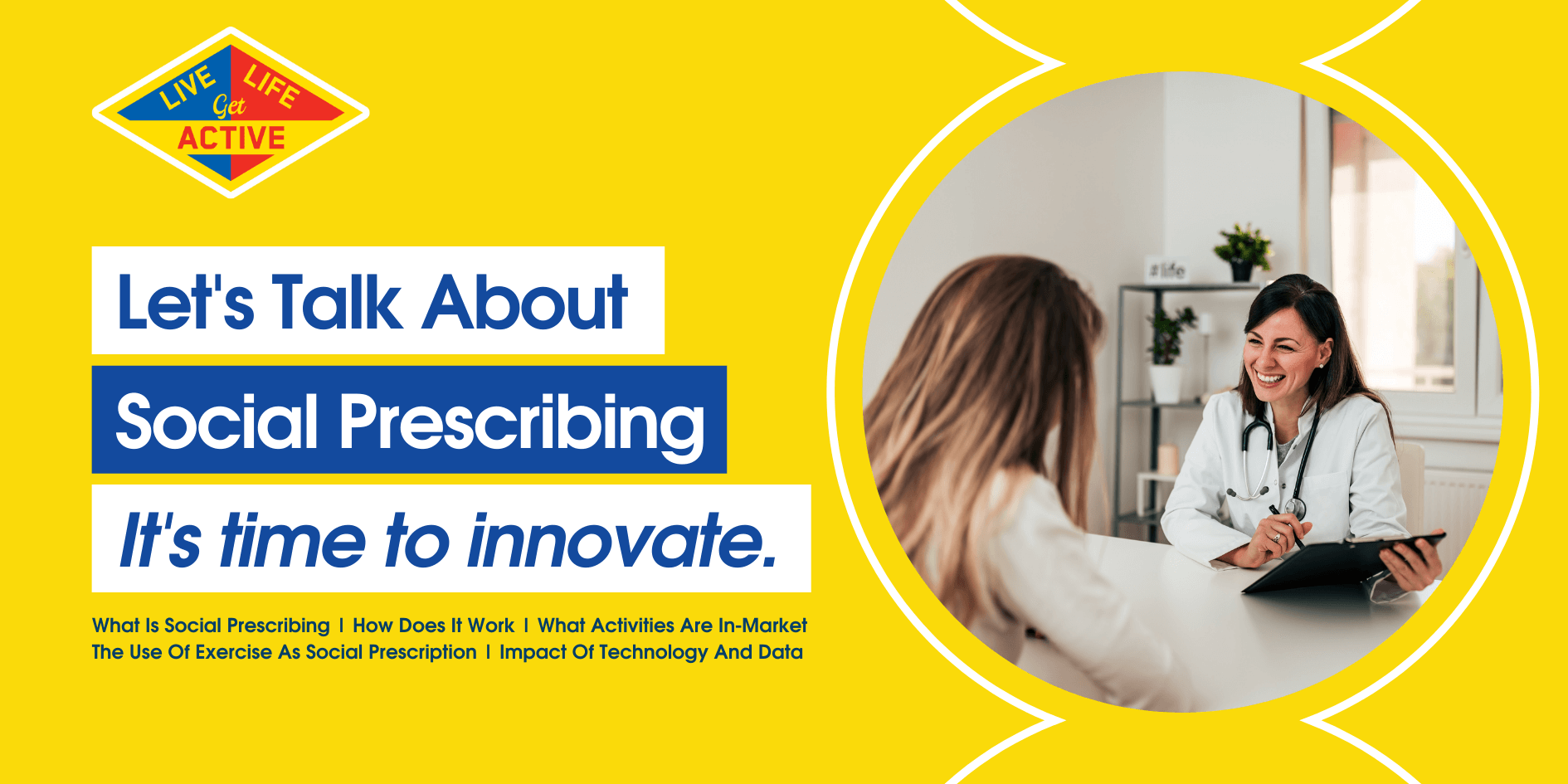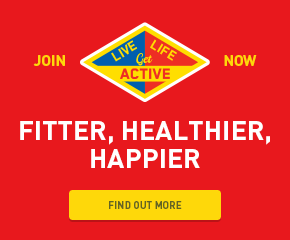The world has changed but our healthcare system has not. It’s time to innovate.
Let’s talk about Social Prescribing.
The need for innovative and practical solutions to address everyday healthcare issues is long overdue but we believe that recent global events have now made it essential. Essential not only for an effective healthcare system but also for a healthy, happy and supported society.
Health has taken a back burner in the last two years. People have a fear of the future. Those living with chronic conditions are feeling most at risk. GP visitations are down. Mental health issues are up and resources are stretched.
The population is ageing, unwell and feeling isolated and disconnected. Maintaining a household, keeping a family together, juggling education and trying to effectively be employed has often meant women’s health in particular is negatively affected.
Traditionally each of these issues would be dealt with via a trusted pathway. One issue, one pathway. But this is not sustainable given increasingly burdened primary and secondary healthcare resources.
It’s time to think differently.
One innovative and practical solution is Social Prescribing. This puts a different focus on the doctor-patient relationship and opens a world of possibilities for improving people’s physical and mental health, as well as their overall wellbeing.
While this concept is not new, it is becoming increasingly popular and a driving force in the future of healthcare in the UK and Canada. But while it’s sweeping the rest of the world, Australia has been slow to advance this health trend despite a concerted push by Mental Health Australia, the Consumer Health Forum of Australia and the RACGP urging the Federal Government to implement a national social prescribing scheme.
What Is Social Prescribing and how does it work?
Social prescribing allows health professionals like GP’s and clinical/practice nurses to prescribe a range of non-clinical services to help support individuals to take greater control of their own health.
It’s designed to support people with a wider range of social, emotional or practical needs, focusing on both mental health and physical wellbeing.
Those that benefit are people with mild or long term mental health problems, people with complex needs, those that suffer from chronic disease such as diabetes and obesity. People who are socially isolated and those with multiple long term conditions who frequently attend primary and/or secondary health care services.
And while it doesn’t eliminate the need for general practitioners to recommend medication, social prescribing is an additional tool used to provide education, advice, and increased social support.
Jayne Nelson, CEO of IPC Health explains “this model tackles loneliness and can help with chronic disease management this helps get people out of the GP clinic and into activities”
And because people often visit their doctor for symptoms related to underlying social conditions, like loneliness and isolation, a treatment beyond medicine is vital to promote better outcomes.
Live Life Get Active also spoke with Simon Rosenbaum a Scientia Associate Professor in the School of Psychiatry, UNSW Sydney and an honorary fellow a the Black Dog Institute on the matter.
“Social prescribing allows the translation of evidence into real world programs that we know have potential to improve mental and physical health. Social prescribing can facilitate a focus on prevention instead of treatment, and health rather and wellbeing rather than of illness”
What sort of activities are out there now?
Social prescribing in its most basic form, can simply be referring patients to a community group. Enabling the patient to enjoy the interaction of new people. Encouraging them to participate in a new or long forgotten activity. Providing them with a means of sharing stories and issues that others have in common. Providing a diversion from everyday life.
There are many amazing offerings in the market. Think of the Heart Foundation Walk, Park Run and The Man Walk to name a few. Local councils also offer numerous free community activities that run throughout the day. But detailed measurement over and above participation rates and patient feedback are lacking. So is funding, most bodies continuously pitching to obtain financial support.
“I believe social prescribing for improving wellbeing in patients with diabetes is a very valuable and proven effective way to help patients achieve better health outcomes. Unfortunately, I don’t believe we do this enough and it would be good if this was more widely adopted. I believe the service that Live Life Get Active Offers is unique and on a scale that makes a difference.” – Professor Glen Maberly, Director Western Sydney Diabetes.
Live Life Get Active’s Program
Live Life Get Active has spent 7 years developing a community program to address chronic disease and poor mental health working with LGA’s, health networks and commercial partners. The foundation of the offering is an interlinking strategy that combines fitness, nutrition, motivation and community. And very importantly – a non-intimidating environment that welcomes all irrespective of ability, age or culture.
All activity and frequency of engagement is monitored and we collect data from over 90,000 Australians. But on top of this in 2019 we set up a simple, easy to use referral system for general practices, that enabled the prescribing loop to be closed and doctors to get data in support of their social prescription. This system has allowed us to gather empirical proof as to the efficacy of social prescribing
Once referred, patients are encouraged to regularly attend outdoor fitness classes and engage with relevant well being content. As patients start to see the positive benefits, they feel motivated to make healthier choices in regard to food and other lifestyle behaviours.
The initial trial was conducted in Toongabbie NSW. In 20 weeks it clearly showed a 1% improvement in K10 scores, 9% improvement in obesity risk, average weight loss of 3kg, waist circumference loss of 4cms and 13% improvement in diabetic risk. 192 individuals were involved.
“Thanks to LLGA for the camp they provide as it has helped motivate me to get fit, healthy and to train with like minded people. I can really confirm that every instructor I have trained with have been sincere, dedicated people who are passionate about their job. One person mentioned that some doctors in my area were recommending LLGA to their patients, particularly diabetics.” – Toongabbie NSW Member
The almost immediate traction in this program adds to our strong belief in the power of social prescribing and its potential to give the Australian healthcare system two key benefits. Treating people in community settings with lower cost or no cost at all and reducing pressures on other parts of the system by providing early intervention for complex needs.
The Use of Exercise as a Social Prescription
The benefits of exercise are well-documented and accepted in research, yet the use of physical activity as a prescription is still limited in its use worldwide. However, Live Life Get Active and other community based programs are proving that when used by practitioners, the uptake and engagement with physical activity is much greater.
Yes, GPs have been recommending exercise to their patients for years. However, a recommendation is like a suggestion, given freely but without clear direction or plan of action. A prescription on the other hand is both tangible and much easier to implement. The difference between the two is significant, especially when it relates to exercise.
As discussed the benefits are numerous but very importantly the prescription is without prejudice. Which is why we believe that physical exercise must be a cornerstone in any social prescription program.
There is no stigma attached and so prescriptions involving regular physical activity and social connectivity can address many of the underlying concerns as well as the obvious issues patients present.
Studies by the National Institute of Health have found that regular exercise leads to:
- Better mental health – happier/confident
- Weight loss
- Stronger muscle and bones
- Increased energy
- Reduced risk of chronic disease
- Skin health
- Brain health and memory
- Relaxation and sleep
- Reduced pain
- Better Relationships
Technology & data collection will further advance the efficacy of social prescribing
Technology has increased social prescribing efficacy by making it easier for GPs and Clinics to prescribe exercise through digital programs and send referrals for physical and social activities at the push of a button.
Other ways health tech creates effectiveness within social prescribing include:
- Online databases of community resources allowing providers to quickly identify programs and services that best meet the patient’s needs.
- eHealth and data management software give practitioners instant access to their patient’s health information so that they have a complete understanding of the patient’s physical, emotional, and mental health needs.
- Social media and virtual health programs help patients build and maintain connections through online communities.
Technology makes the collection of and access to patient and community data possible. And with this valuable data, you get measurable outcomes that can prove the effectiveness of social prescribing.
Such evidence helps programs like our “Positive Prescription” continue to grow and improve the lives and wellbeing of those who need it most.
Value To Society
What is the true value of social prescription? We believe that we are yet to see the real effect of what a large-scale embrace of this patient centred movement could bring. The data around the impact upon stigma, underlying health issues and more is still on the horizon.
As we look to the future, social prescribing is on the Federal agenda and it is hoped that it soon becomes a mainstream strategy in healthcare. Let us also hope that funds are made available to provide solutions that deliver measured value, attract no stigma and support a healthy and happy society.
For More Information On Our “Positive Prescription” Program Please Provide Your Details Below.
We will be in touch shortly.


